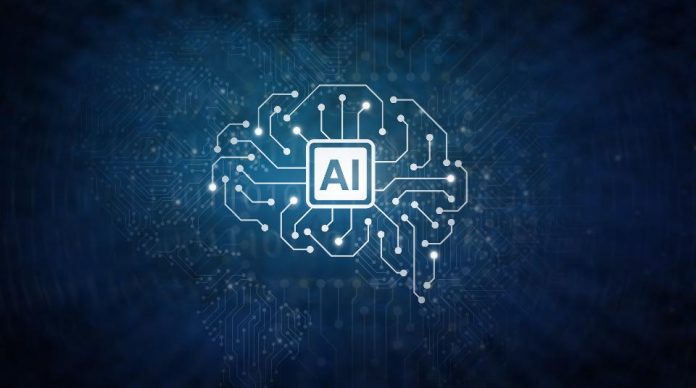This article is written by Anuj Anand.
Table of Contents
Why Artificial Intelligence (A.I.)
Merger and Acquisition (M&A) deals reached a global value of $3.7 trillion in the year 2019 and they are an essential part of corporate financial and commercial law. M&A are taking longer than before. Garter says the average time in closing a deal takes 31% longer than that in 2010.[1]
Experts have already found a way for an A.I. to draft contracts, conduct due diligence. It was only possible because of the repetitive task of drafting similar terms and reviewing documents to prepare a due diligence report. It is time-consuming and requires a substantial amount of human work hours. A new computer system that processes data and gives the output faster, accurately and efficiently than a human will always be preferred. It is pertinent to note that even advanced technology such as A.I. requires human interaction to function.
Artificial Intelligence can be an answer to accelerate the process, reducing human error and operating costs for an M&A law firm or a company with an in-house legal department. For ease of understating I would mention both company and law firm from here on as a law firm. The law firm needs to take steps now for when the technology is ready. It is essential to understand how it will work and what can it be used for, before moving to steps.
How will it work
Any A.I. or a machine learning program functions through data. Data to an A.I. is what “Scheme of Arrangement” (or Agreement and plan of Merger) is to a Merger deal. The whole structure could not function if the core document is missing.
A computer can use the case data for supervised or unsupervised machine learning. A supervised learning process is when data of past events are used as an example to make machine learn (known as training) and then predict the future of any particular event based on that training (known as testing). An unsupervised learning process is when unstructured data is given to the machine and it has to find patterns/correlation through sorting data to form clusters/groups and organize it. More the data fed into the machine to train it, the better and efficient are the results.

Why would a Law firm need an A.I.
A supervised learning in a law firm will be used for purposes like due diligence, document arrangement (priority wise), automatic formatting, reviewing documents and making it legally strong. Predict and suggest potential acquisition structure solutions. For example, previous cases due diligence agreements paired with their due diligence report would be fed into the machine and train it. Once the machine is trained, it will be able to create due diligence reports on its own by analyzing agreements in considerably shorter periods of time for minimal costs.
An unsupervised learning in law firm would be for purposes like calculating optimum resources required for completion of a merger in a fixed time period or success of a merger with a regulatory body like National Company Law Tribunal (NCLT) or Federal Trade Commission(FTC) or Department of Justice (DOJ) before even beginning any transaction. Furthermore, it will be able to predict what combination of partner and associates would perform best, faster and efficiently in a particular kind of transaction. It would be able to co-relate what kind of clauses structured with specific words, included, reduces the risk of litigation. It will help law firms to create a portfolio representing the potential timeline with success rate of merger deals.
Top 5 things Corporate Law firms need to do now
1. Build a Case Data Management team
If Corporate law firms do not already have a case data management team, they should. A case data management team (CDMT) would comprise of at-least an IT professional, a computer and a lawyer. The lawyer would explain what are the core documents/process of an M&A deal to the IT professional and accordingly data sets could be extracted, organized and stored.
Data sets are very important for A.I. to function as explained above. The IT professional has the skill to gather and organize data and the lawyer is the guiding light. A dataset is useless if the data extracted is irrelevant, it has to be the right information to well-train the machine.
2. Keep the agreements stored and organized
Law firms do not throw away or delete their drafted agreement. However, they might not keep the agreements they get during due diligence. The agreements the law firm is getting to conduct due diligence, can be a great source of free data. It is essential to point out here that these other agreements originated from a different source, which can improve the result because of varied data. However, there can be a couple of impediments to using outside agreements.
A non-disclosure agreement limiting the use only for evaluation purposes or a document destruction clause requiring to destroy the documents after the deal closes. The law firm needs to keep in mind these clauses and not use the agreements if these clauses exist in the deal process.
Aside from the agreements from other sources, the firm has its own storage of agreements. These agreements need to be organized to create the data bank. Compartmentalization of the agreements is the best way to organize the agreements. The agreements need to be saved not by the case name but by the type of agreements. For example, all the real estate lease agreements go in one folder, all copyright licensing documents in the other and so on. Corporate Law firms can have these huge repositories from agreements that they have worked upon.
3. Save and organize Judgments by Regulatory Authorities
It is free data in the public domain, which a law firm can use now to create its own data bank. An unsupervised learning can be a great tool at analyzing, processing and finding patterns or correlation from a bigger perspective between two things that a human mind cannot process.
The machine can extract, read and analyze 100 judgments in a matter of minutes to find correlation in facts, persons, number thresholds, to sort them and then group them. This data can then be used to give you an extremely detailed output such as a merger agreement filed on a Wednesday on a legal issue ‘I’ taken up by Judge ‘X’ would give you a result of ‘Y’.
The law firm needs to save judgments on common legal issues that have had conflicting views. Common legal issues like, what amounts to control in acquisition by Competition Commission of India or how will the relevant market be determined in evolving industries or how merger will be allowed after calculating through Four Concentration ratio and Herfindahl–Hirschman Index HHI method by Federal Trade Commission and Dept. of Justice. CDMT will be helpful in pointing out relevant issues in important judgments for extraction, organizing and storing.
4. Score your past and current work
This is the easiest of all, after completion of the work and submission to seniors. The junior must rate themselves on a scale of 1 to 5 where 5 means the work was easily done with perfection and write down the hours taken to complete the work. The senior will then rate the work on the same scale of 1 to 5. The senior will also write down hours that should have been taken to complete the work. These scores should not be revealed to each other. This process can go on for the entire hierarchy of the firm. The process of scoring past agreements can go back 2-4 years, no more than that is required. The firm should focus more on scoring their current work.
The scoring system will have two benefits, the first would be to create a merit based approach where the computer will analyze the employees on an individual level and also show correlation between the work done, completion hours, partner—senior—junior associate efficiency rate.
The second benefit would be the machine can take senior based scores on a work and then train itself to recognize good-quality drafting work. Once the machine is trained, it will be a self-sustainable scoring system to score any kind of drafting work fed into the machine.
5. Build your own processing computer
Artificial Intelligence requires computing power. How much? That is the question I leave for IT professionals. As per your current needs for collecting, extracting, organizing and storing data. I would suggest buying your own processing computer. I would also suggest asking the CDMT to start building the core code for your own little A.I. to start seeing the results right away. Core-code would just be the core-engine to run the data and analyze it without any graphical or application package to add aesthetics for making a full-fledged software at hand.
I understand this can look to be an expensive option, however it is not as you might think. A high powered computer would not cost more than Rs. 1.5~2.0 Lakhs ($2000~$2500). Attorney-client confidentiality can be a huge roadblock when transferring your data to third-party websites like Amazon web services (AWS: a website that provides you with huge computing power through cloud based computing). Instead, use your own computer to keep the confidential information within the boundaries of the law firm. The IT professional with experience in AI algorithm and development would be able to develop a code for simpler tasks mentioned above. As the need for complex tasks grows, you can always grow your CDMT by hiring more people.
Conclusion
The law firms have to be ready with all the technological developments such as block chain smart contracts, Artificial Intelligence. The steps will help the firm to update itself with the new technology with minimal costs, and set up a merit based system to track the efficiency of the employees. If the firm reduces its reviewing work load, it will be able to spend more time on the other parts of the deal, and close the deal faster than before in comparison to its other competitor law firms in the market without any help from the A.I.
References
[1] Gartner Says the Average Time to Close an M&A Deal Has Risen More Than 30 Percent in the Last Decade, https://www.gartner.com/en/newsroom/press-releases/2018-10-15-gartner-says-the-average-time-to-close-an-manda-deal-has-risen-more-than-30-percent-in-the-last-decade (last accessed on 06/27/2020).
LawSikho has created a telegram group for exchanging legal knowledge, referrals and various opportunities. You can click on this link and join:
 Serato DJ Crack 2025Serato DJ PRO Crack
Serato DJ Crack 2025Serato DJ PRO Crack










 Allow notifications
Allow notifications



